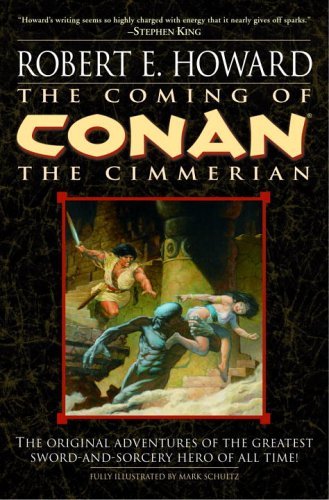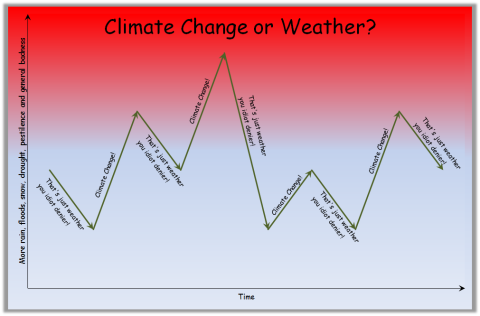Jane Psmith reviews Robert E. Howard’s The Coming of Conan the Cimmerian:
Know, oh prince, that between the years when the oceans drank Atlantis and the gleaming cities, and the years of the rise of the Sons of Aryas, there was an Age undreamed of, when shining kingdoms lay spread across the world like blue mantles beneath the stars — Nemedia, Ophir, Brythunia, Hyperborea, Zamora with its dark-haired women and towers of spider-haunted mystery, Zingara with its chivalry, Koth that bordered on the pastoral lands of Shem, Stygia with its shadow-guarded tombs, Hyrkania whose riders wore steel and silk and gold. But the proudest kingdom of the world was Aquilonia, reigning supreme in the dreaming west. Hither came Conan, the Cimmerian, black-haired, sullen-eyed, sword in hand, a thief, a reaver, a slayer, with gigantic melancholies and gigantic mirth, to tread the jeweled thrones of the Earth under his sandalled feet.
Robert E. Howard’s Conan stories are everything I have ever wanted in fantasy literature — decadent cities bowed under the weight of the ages, wicked sorcerers, gushing arterial blood, lurking antediluvian horrors, red-handed buccaneers, strange magics that have slumbered beneath the sands for untold centuries, glorious cavalry charges into the teeth of death, arcane jewels the size of ostrich eggs, monstrous ape-like demons with slavering jaws, captive princesses, steely thews — and this is the way to read them. For years they were only available in heavily-edited versions, interspersed with “posthumous collaborations”,1 and, worst of all, presented in chronological order (has Narnia taught us nothing?). These editions, though — there are two more volumes — give us Howard’s texts, in the order Howard wrote them, and beautifully illustrated.2 They’re a great pleasure to read, and you should, so I promise not to spoil any major plot points.
Howard got his professional start with boxing stories, but his great authorial love was historical fiction. “There is no literary work, to me, half as zestful as rewriting history in the guise of fiction,” he wrote in 1933. “I wish was I able to devote the rest of my life to that kind of work.” He published stories set during the Crusades (see, for example, Hawks of Outremer, which has some notable similarities to his later work on Conan) and the eras of Mongol and Islamic conquest, and failed to sell tales of ancient Irish warriors. Unfortunately, the markets were slim (more or less only Oriental Stories, which only ran for four years) and the demands of research high: “I could never make a living writing such things, though,” he went on. “[I]t takes me so long to complete one. I try to write as true to the actual facts as possible, at least, I try to commit as few errors as possible. I like to have my background and setting as accurate and realistic as I can …” In his Hyborian Age, the setting for his Conan stories, Howard hit upon an ingenious solution: take the coolest parts of history, file off the serial numbers, and do with them as you will. As a bonus, it means you can combine eras and civilizations that could never have coexisted (or, indeed, existed at all) in real history: the Hyborian Age has 13th century France (or its imagined version of Charlemagne and his Paladins) in the streaming banners of Aquilonia, the Old Kingdom of Egypt in the necromantic rituals of Stygia, warring Assyrian city-states in the lands of Koth, the hill tribesmen of Afghulistan and the tent-dwelling Shemite nomads and the wild pillaging Picts, all immediately recognizable. Howard paints in broadest of strokes, with none of the specifics that would obsess, say, me — there’s no fussing about why classical Greece is next door to the Timurids or why you have the Bronze Age one place and the Middle Ages elsewhere — but it works. Here’s a sweeping picture of rumor spreading across his world in Black Colossus:
Rumors drifted up through the meadowlands, into the cities of the Hyborians. The word ran along the caravans, the long camel-trains plodding through the sands, herded by lean hawk-eyed men in white kaftans. It was passed on by the hook-nosed herdsmen of the grasslands, from the dwellers in tents to the dwellers in the squat stone cities where kings with curled blue-black beards worshipped round-bellied gods with curious rites. The word passed up through the fringe of hills where gaunt tribesmen took toll of the caravans. The rumors came into the fertile uplands where stately cities rose above blue lakes and rivers: the rumors marched along the broad white roads thronged with ox-wains, with lowing herds, with rich merchants, knights in steel, archers and priests.
You know immediately what he’s gesturing at with all these peoples and places. H.P. Lovecraft, Howard’s friend and frequent correspondent, complained about his “incurable tendancy to devise names too closely resembling actual names,” but that was precisely the point. Why waste pages establishing the culture and character of an imaginary people with no emotional valence to anyone but the author when you can simply call a real people to mind in a few choice words? We already have a wealth of associations and baggage with the real world; it just makes sense to use them when you can. This is true on the small scale — as game designer and writer Kenneth Hite points out, your reader will have a much more powerful reaction to the shocking revelation that the queen is a vampire if it’s Elizabeth I rather than Lots’apostrae’fiis VII, to whom they were introduced three pages ago3 — but it’s even more useful when your fictional world has a wide scope. And indeed, Howard’s strategy works so well that it’s been copied by a great deal of subsequent fantasy literature: A Song of Ice and Fire is full of it, as is the world of Warhammer Fantasy. Even Tolkien, widely considered the master of secondary world fiction, works best for me when he draws most directly on the real world: on a recent re-read of Lord of the Rings, I cheered for the Rohirrim but had trouble caring about the Dúnedain and the line of Elendil until I started mentally substituting “Atlantis” for Númenor.
1. This is what they call it when you’re dead and someone else writes a story based on your notes, because they think “raping a corpse” isn’t very catchy.
2. They make wonderful audiobooks, too, if that’s your jam, but do take a peek at the illustrations if you can.
3. Actually, Elizabeth II would be even more fun.







